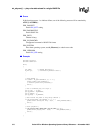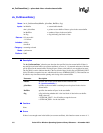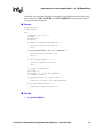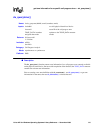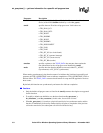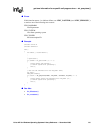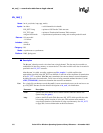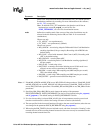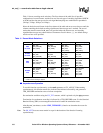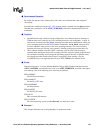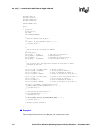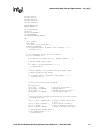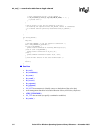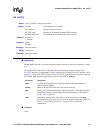
336 Voice API for Windows Operating Systems Library Reference — November 2003
dx_rec( ) — record voice data from a single channel
dx_rec( )
record voice data from a single channel
!
!!
! Description
The dx_rec( ) function records voice data from a single channel. The data may be recorded to a
combination of data files, memory, or custom devices. The order in which voice data is recorded is
specified in the DX_IOTT structure.
After dx_rec( ) is called, recording continues until dx_stopch( ) is called, until the data
requirements specified in the DX_IOTT are fulfilled, or until one of the conditions for termination
in the DV_TPT is satisfied. When dx_rec( ) terminates, the current channel’s status information,
including the reason for termination, can be accessed using extended attribute functions. Use the
ATDX_TERMMSK( ) function to determine the reason for termination.
Note: For a single file synchronous record, dx_recf( ) is more convenient because you do not have to set
up a DX_IOTT structure. See the function description of dx_recf( ) for information.
Name: int dx_rec(chdev, iottp, tptp, mode)
Inputs: int chdev
• valid channel device handle
DX_IOTT *iottp
• pointer to I/O Transfer Table structure
DV_TPT *tptp
• pointer to Termination Parameter Table structure
unsigned short mode
• asynchronous/synchronous setting and recording mode bit mask
Returns: 0 if successful
-1 if failure
Includes: srllib.h
dxxxlib.h
Category: I/O
Mode: asynchronous or synchronous
Platform: DM3, Springware
Parameter Description
chdev specifies the valid channel device handle obtained when the channel was
opened using dx_open( )
iottp points to the I/O Transfer Table Structure, DX_IOTT, which specifies the order
of recording and the location of voice data. This structure must remain in
scope for the duration of the function if using asynchronously. See DX_IOTT,
on page 509, for more information on this data structure.



